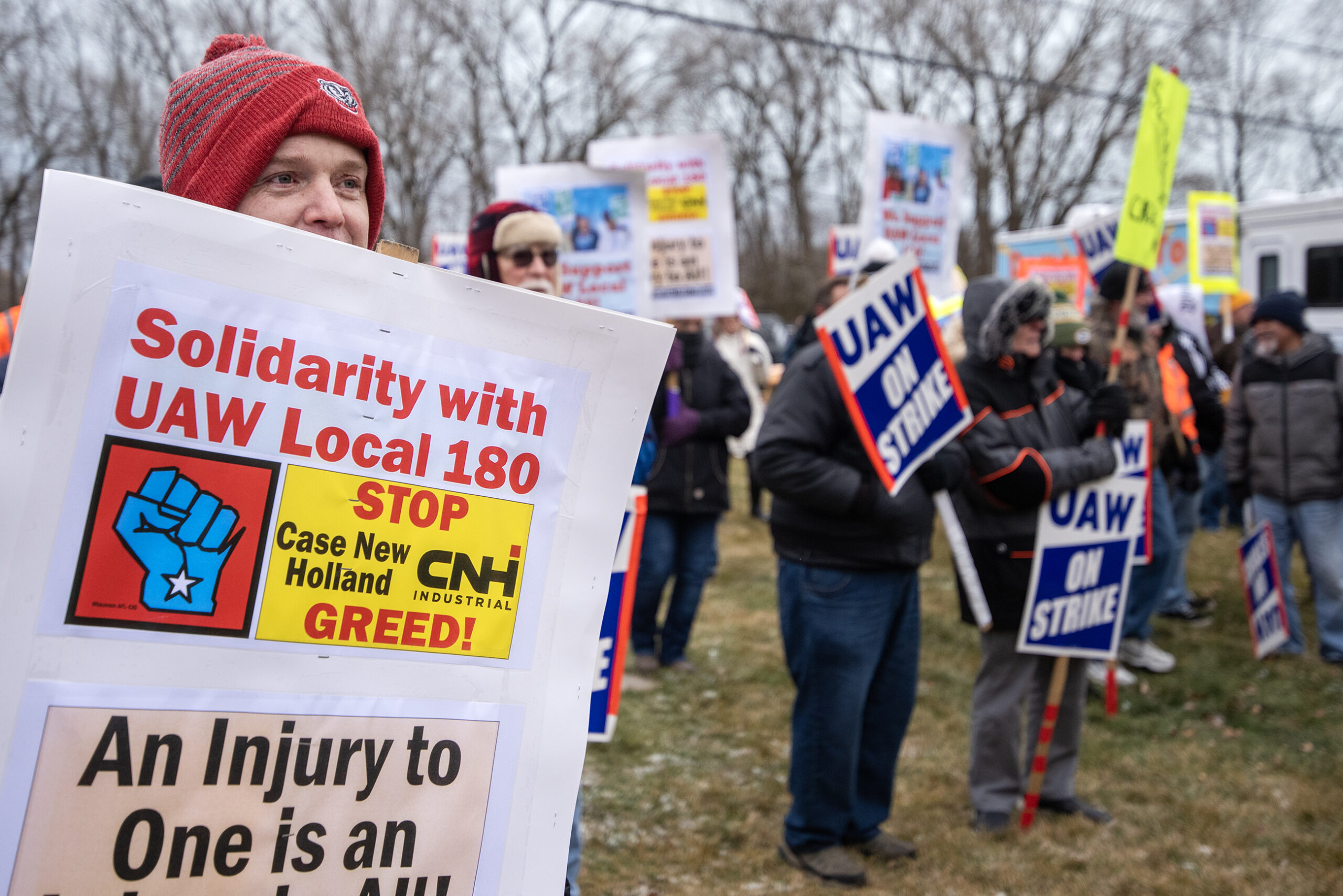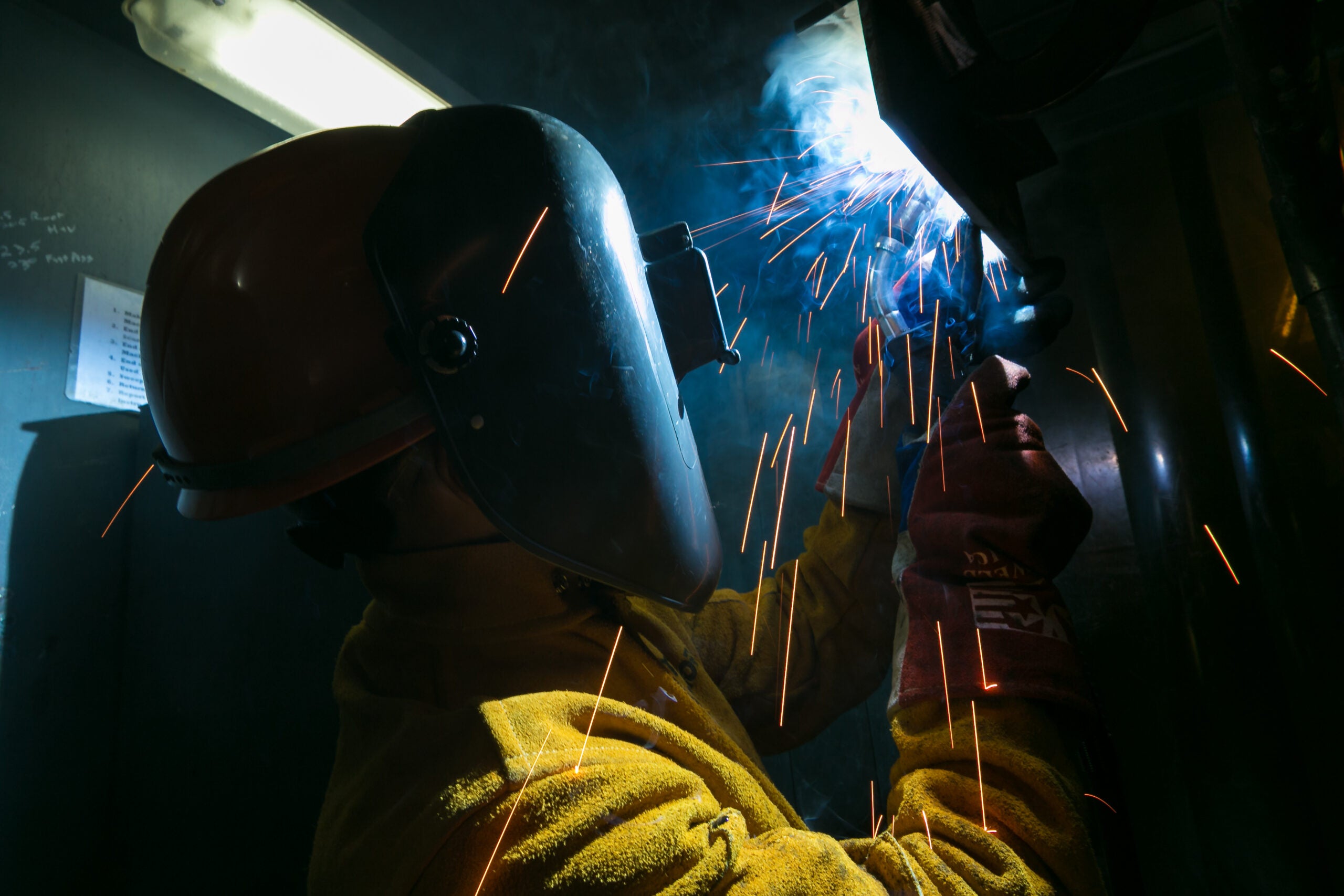Editor’s Note: This is part three in a Wisconsin Public Radio News series on the ramifications of long-term unemployment (part one and part two).
As Wisconsin’s manufacturing sector bounces back from the Great Recession, some economists and workforce development experts say Wisconsin’s factories are suffering from a lack of qualified workers.
Those who believe in the “skills gap” say manufacturers need trained workers. Others say if there is a skills gap, employers should be paying higher wages.
Stay informed on the latest news
Sign up for WPR’s email newsletter.
Policymakers have talked a lot about the skills gap since the recession hit in 2008. Those who tout the gap say positions like welders and computer-controlled equipment operators are going unfilled and are holding the economy back.
Marc Levine isn’t buying it.
“Those who claim a skills gap are basically saying the equivalent of someone saying, ‘God you know we have a gasoline shortage here in the state of Wisconsin – and you know how we know that we have a gasoline shortage? Because the price of gas is going down!’” said Levine.
Levine is a professor of history and economics who is also the founding director of the Center for Economic Development at the University of Wisconsin-Milwaukee. He published a study on the skills gap in 2013. At the time, he found there were between six and 10 unemployed welders for every open job in Wisconsin. He said the economy has since rebounded a bit, but that employers are not offering salaries that would be justified in a tight labor market.
“Since 1986, for example, the real wage for welders in Wisconsin has declined by over 10 percent,” said Levine. “So it doesn’t make sense that employers can’t find workers, yet they’re lowering those wages for workers?”
Levine’s study compared wages for welders to those of registered nurses. He says nurses’ pay has gone up.
“Between 1986 and today the real wage of registered nurses has gone up by almost 30 percent in Wisconsin – a little less than 30 percent, about 28 percent,” said Levine. “So clearly with a shortage of registered nurses, we’re trying to coax people into that market by raising wages.”
The state Department of Workforce Development, however, says the skills gap is real. Jim Golembeski, who directs the Bay Area Workforce Development Board (an arm of the DWD), cited a study by the Northeast Wisconsin Manufacturing Alliance, which finds that employers increasingly report they have “difficulty finding talent.”
“In this new survey, 60 percent of the manufacturing employers in our area surveyed said ‘Yes, we’re having difficulty finding talent,’” said Golembeski. “That to me is some pretty solid data.”
The survey didn’t ask employers if they are offering higher wages to new workers.
Golembeski and the DWD say one reason wages for people like welders are down is demographics: He said skilled, experienced baby boomers are retiring and that people who are replacing them are relatively inexperienced and haven’t earned higher wages yet.
Golembeski also said employers are picky.“One of the biggest reasons why people are not hired, even though they may be perfectly good welders, is they can’t pass a drug test,” he said.
Levine says Wisconsin’s economy needs to be driven from the “demand side” – in other words, invest in the nation’s infrastructure. He cited a study from the American Society of Civil Engineers, which says that infrastructure like roads, bridges, and sewer systems need more than $3 trillion in repairs.
“We will invest for the future by spending money on infrastructure, and in the present, will provide jobs.”
In 2013, Gov. Scott Walker announced $100 million in state grants to go to Wisconsin’s technical colleges. “Wisconsin Fast Forward,” which will receive around $15 million of that, is designed to beef up training programs for careers in advanced manufacturing and in agriculture. The first rounds of grants are now being distributed.
Wisconsin Public Radio, © Copyright 2024, Board of Regents of the University of Wisconsin System and Wisconsin Educational Communications Board.





